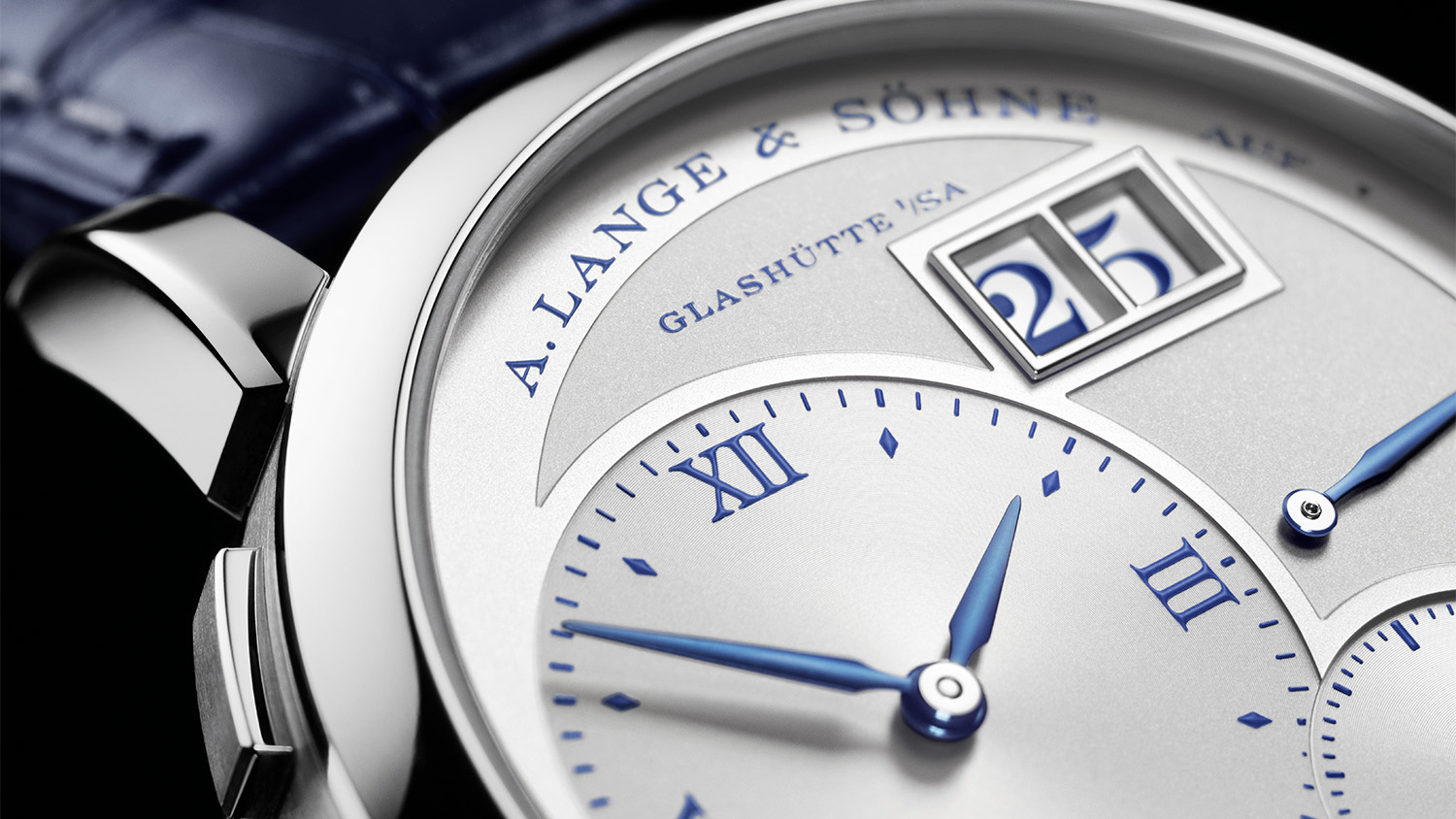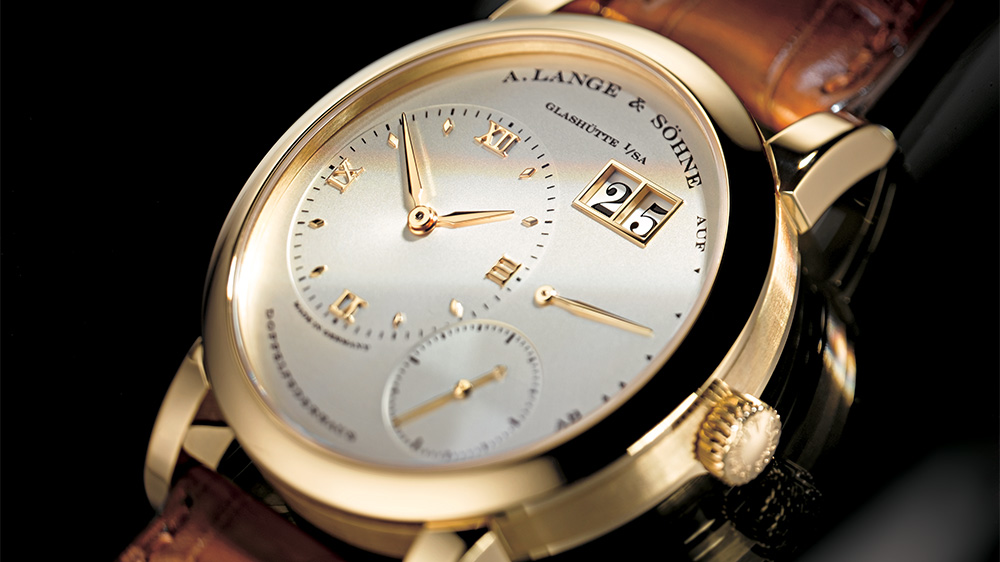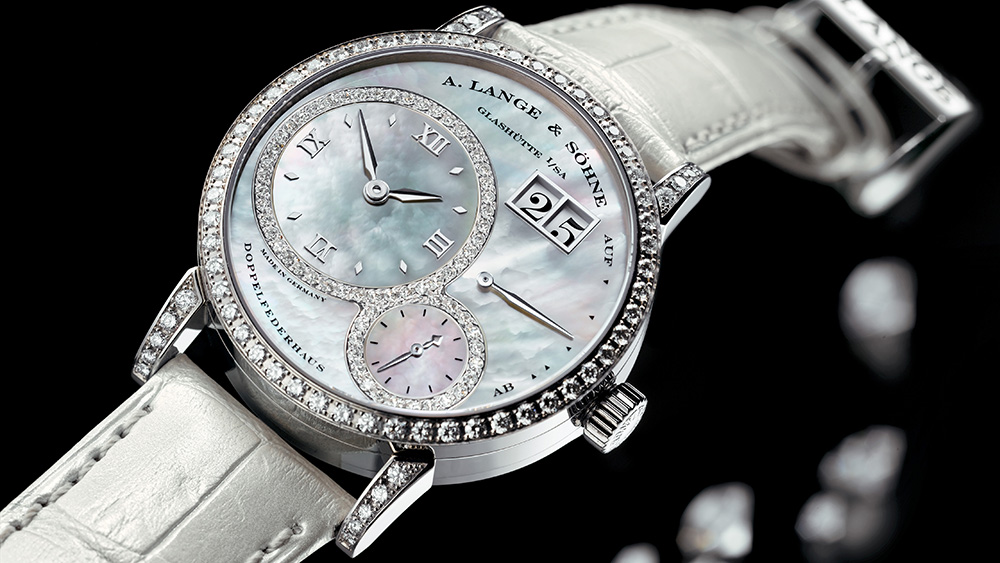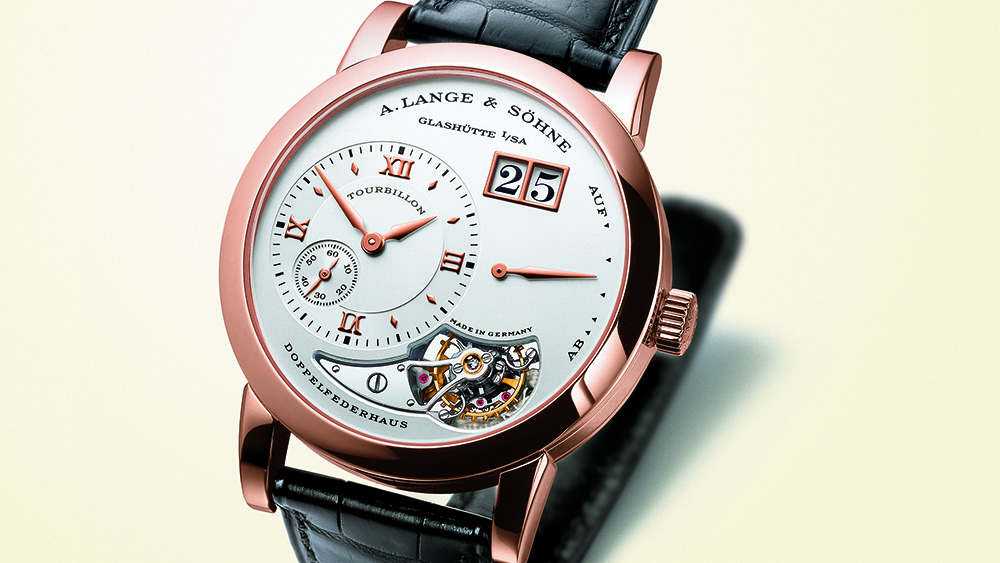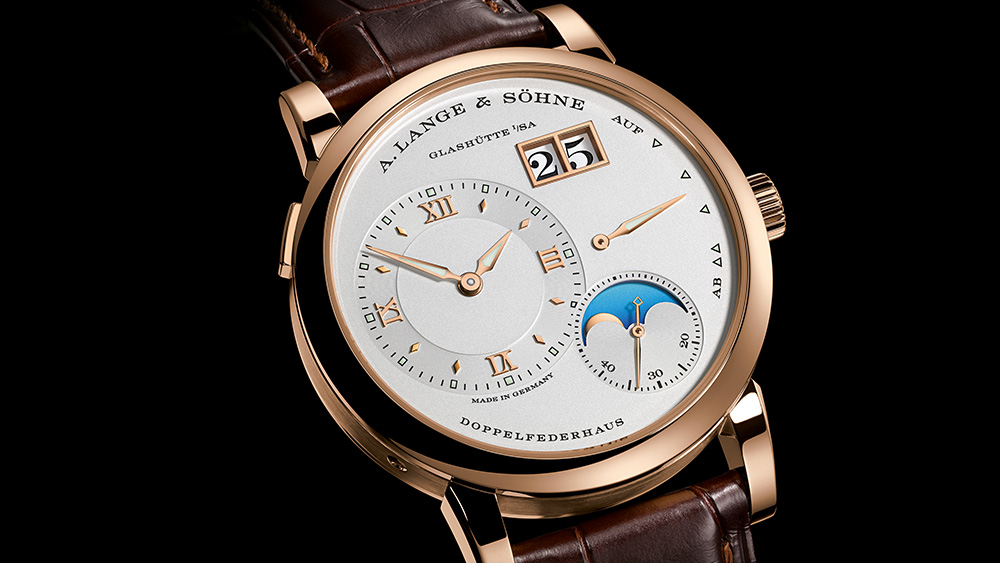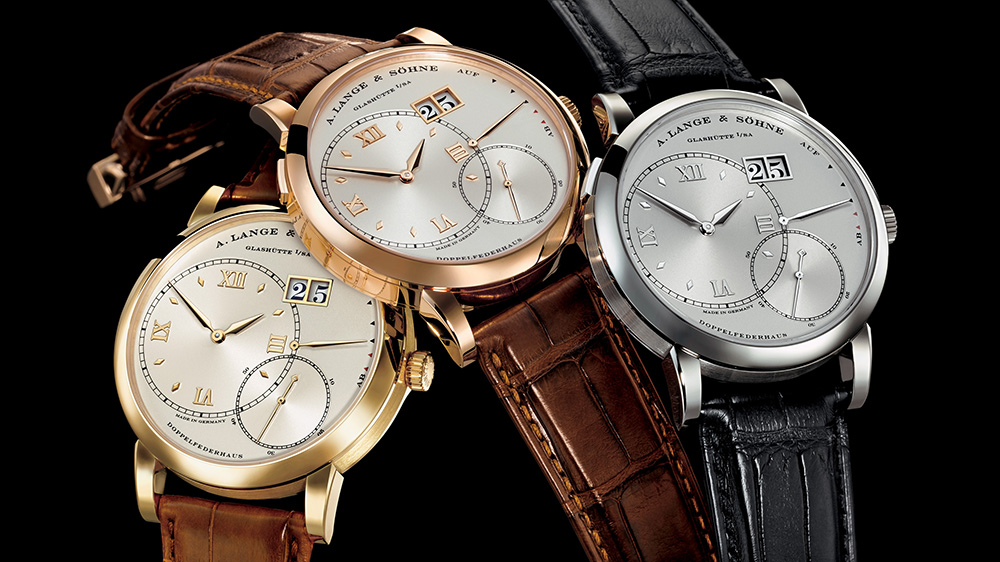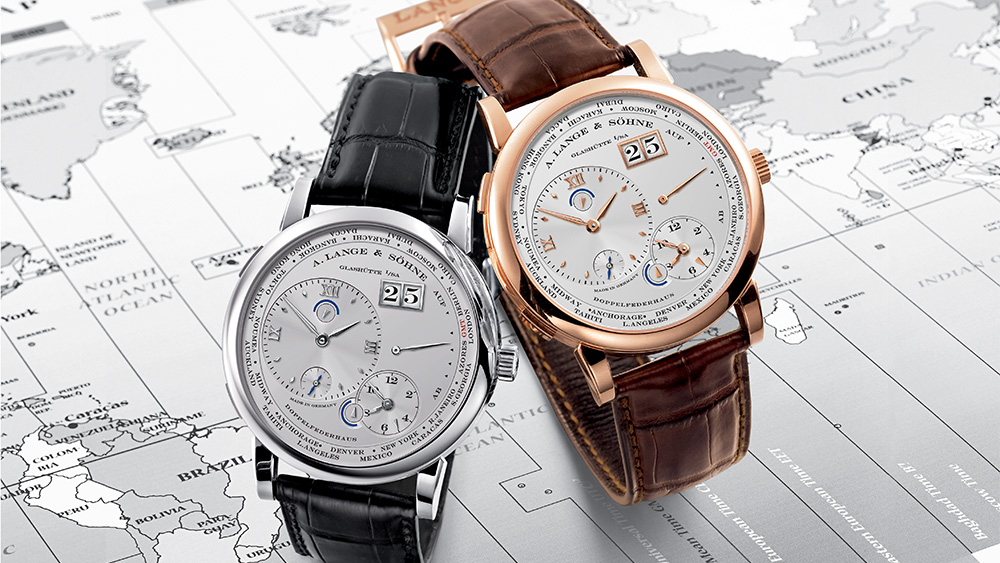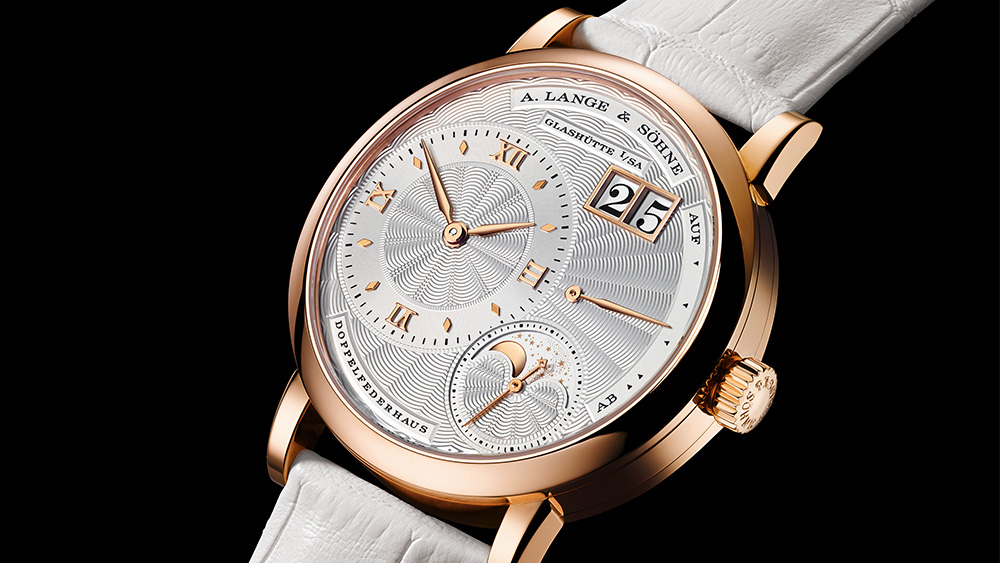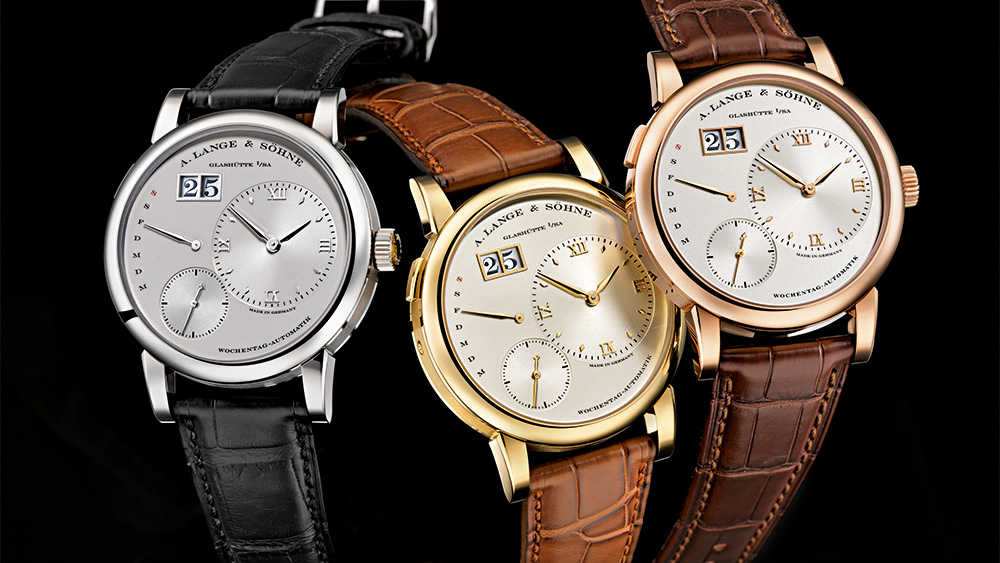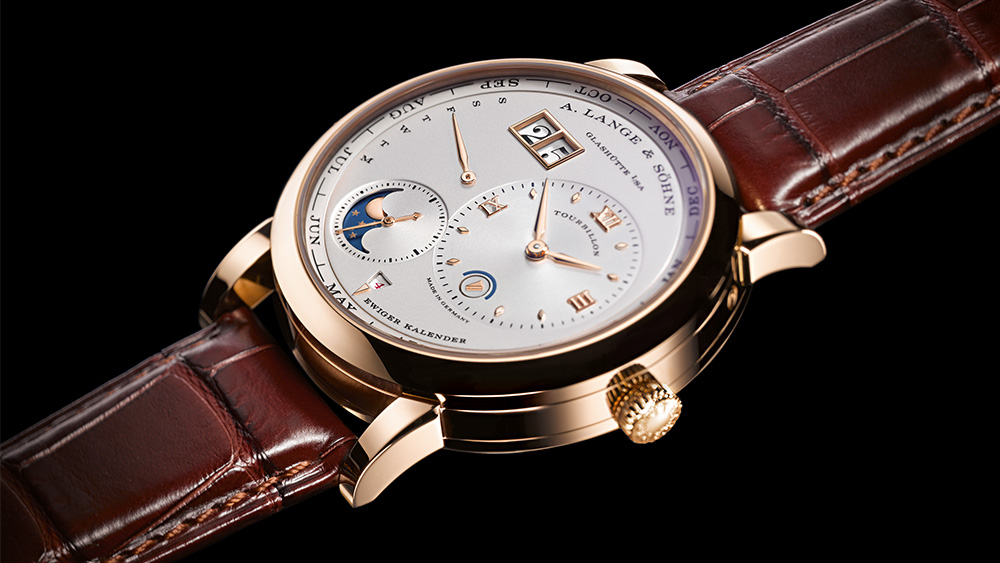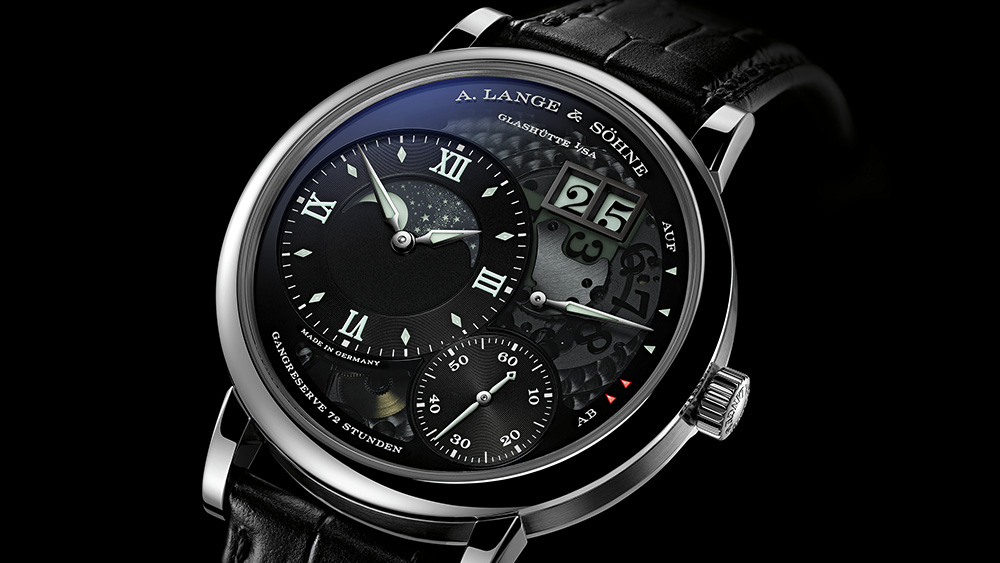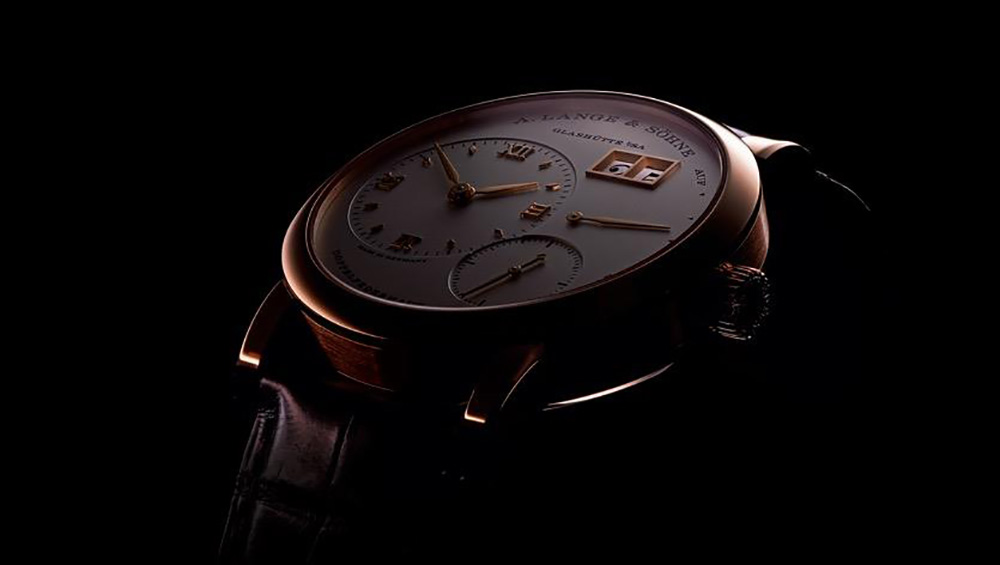
Lange 1 – A Chronology
Straightforward, functional, and efficient – these attributes define German design. But the quest for the perfect form is driven mainly by passion. There is no other way to explain the long-lived enthusiasm for visionary designs such as the Barcelona chair, the Braun radio, or the Porsche 911 even decades after they were first conceived. Many of these designs were initially polarizing but then stood their ground and eventually became style-defining, just like the Lange 1.
Since it premiered on October 24, 1994, it has epitomized the core and the identity of A. Lange & Söhne. With its unique combination of classic style elements and technical innovations, it stands for the determination of the Saxon manufactory to craft the world’s finest watches. Even in its 25th year, the famous watch family created by A. Lange & Söhne remains an unconditional success.
With its asymmetric dial, the three-day movement, and the first outsize date in a regularly produced wristwatch, the Lange 1 elicited enthusiasm when it had its debut on October 24, 1994. Its stringent design, technical innovations, and superb craftsmanship were convincing and sometimes even evoked euphoria. A quarter of a century later, the instantly recognizable watch joined the roster of the 20th century’s great timepiece classics. That is why, despite its new movement, it has remained almost unchanged externally.
Its popularity turned the Lange 1 into the cornerstone of a watch family with currently nine models. They come in various case diameters and are manually wound or self-winding. The portfolio has been enriched with additional functions such as a moon-phase display, a second time zone, or as a combination featuring a tourbillon and a perpetual calendar. Special models and limited editions rank among the coveted timepieces that regularly fetch record prices at auctions.
Compared with other watches of comparable size, the display of the Lange outsize date is about three times larger. The framed double aperture was inspired by the famous five-minute clock in the Dresden Semper Opera House that Ferdinand Adolph Lange helped complete at the time.
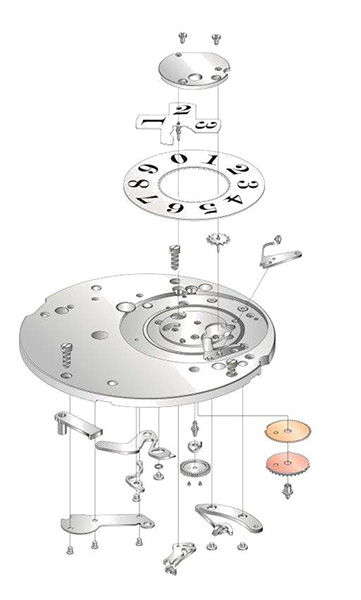
The distance between the units disc and the superposed tens cross is merely 0.15 millimeters. For this reason, great dexterity is needed to assemble this refined mechanism.
The Lange 1 Formula: Despite its off-center layout, the dial of the Lange 1 has an organized and balanced look. This is because the indications are arranged according to harmonious proportions that reflect classic aesthetic design rules such as the Golden Section and triangular corner points.
In mathematics, the Golden Section is defined as the division of a line such that the whole is to the greater part as that part is to the smaller part. Expressed as a number, this is a ratio of 1 to 1.618. The magic formula inspired scholars of antiquity and of the Renaissance. It is omnipresent in the works of artists such as Leonardo da Vinci or Le Corbusier. The Golden Section can be found in two places of the Lange 1: The ratio between the diameter of the dial as well as the diameter of the hour and minute circle corresponds to the Golden Section. The same applies to the height and width of the date aperture.
The displays of the outsize date, the power-reserve indicator, and the subsidiary seconds are aligned along a vertical axis on the right-hand side of the dial. If an imaginary line is drawn through their center points and connected to the axis of the hour and minute circle, the result is an isosceles triangle.
When it debuted on October 24, 1994, the Lange 1 captured everyone’s attention. Self-confident and convincing, it transitioned A. Lange & Söhne’s traditional values into the present. This is due to a special blend of elements that characterize Saxon precision watchmaking, including the three-quarter plate, screwed gold chatons, and a screw balance, complemented with trailblazing innovations such as the asymmetric dial design, the outsize date display, and the three-day movement.
In 2015, the Lange 1 was endowed with a new, technically modified movement featuring a balance spring crafted in-house as well as a freely oscillating cam-poised balance. Since then, the outsize date has switched precisely at midnight as well. There were only minimal changes to the unmistakable design, which only stand out in direct comparison with the predecessor model. In 2019, the icon is still as contemporary as 25 years ago.
Due to its overwhelming success, the Lange 1 was also presented in a smaller format in 1998. With a diameter reduced by 2.4 millimeters, it retained all the assets that made it so successful: the twin mainspring barrel for a power reserve of three days, the power-reserve indicator, and the Lange outsize date. The only technical difference is a corrector button for the outsize date recessed in the case. Since 2018, the newly conceived manufacture caliber L121.1 has been beating in the Little Lange 1 as well as in the Lange 1.
At the turn of the millennium, A. Lange & Söhne introduced a Lange 1 with a tourbillon. It was the world’s first wristwatch endowed with a tourbillon, an outsize date, a twin mainspring barrel for a power reserve of 72 days, and a progressive power-reserve indicator. With a long mirror-polished cock, the new caliber L961.1 movement shifts the tourbillon out of symmetry to the position that in the Lange 1 is occupied by the seconds subdial.
The product developers soon succeeded in achieving something that in 2000 was not yet possible: stopping the balance inside the rotating tourbillon cage directly and instantly. The two subsequent models of the Lange 1 Tourbillon with the attributes “165 Years – Homage to F.A. Lange” and “Handwerkskunst” feature the patented stop-seconds mechanism for the tourbillon.
The continuously driven and thus truly realistic and precise display of the waxing and waning moon is the technical and aesthetic highlight of the Lange 1 Moon Phase launched in 2002. In 122.6 years, the display deviates from the true lunar cycle by merely a single day.
Fifteen years later, the Lange 1 Moon Phase was outfitted with a new manually wound movement. The manufacture caliber L121.3 connects the moon phase with a day/night indicator. Behind the solid-gold moon, a celestial disc – also made of solid gold – performs exactly one revolution every 24 hours. The various times of day are depicted with a blue gradation – from a bright blue hue during the day to a dark blue starry sky at night.
In 2003, the best-known A. Lange & Söhne watch gained 3.4 millimeters in diameter. With 41.9 millimeters and a two-tone dial design, the Grand Lange 1 was clearly more prominent on the wrist.
Thanks to the new manufacture caliber L095.1, the case height was reduced from 11.0 to 8.8 millimeters in 2012. Additionally, the product developers achieved an overlap-free configuration of the time, the outsize date and the power-reserve indicator, as in the Lange 1. In 2013, the Grand Lange 1 “Lumen” had a stunning debut: its semi-transparent dial reveals the mechanism of the first luminous outsize date display.
With its innovative home and zone time indication as well as the circumferential city ring, the Lange 1 Time Zone is the perfect companion for frequent flyers and cosmopolites. In its development, the focus was on superb legibility. The clearly organized dial delivers a single-glance reading of home time and the time in a second time zone. When any zone time is to be declared the new “home zone”, a refined adjustment mechanism makes it possible to exchange the two time indications.
A. Lange & Söhne has been committed to the Concorso d’Eleganza Villa d’Este since 2012. The winner of the prestigious competition for classic automobiles in the “Best of Show” category is gifted with an individualized Lange 1 Time Zone “Como Edition” wristwatch with a manually executed engraving of the host’s coat of arms on the caseback.
The Little Lange 1 Moon Phase joined A. Lange & Söhne’s most successful timepiece line in 2009. It is an impressive ladies’ model that showcases the poetic astronomical complication despite its case diameter of only 36.8 millimeters. Following the Lange 1 Moon Phase, it was also endowed with a new movement in 2017.
The first self-winding Lange 1 opened a further chapter in the success story of A. Lange & Söhne’s most famous watch family. The subtle hallmark of the Lange 1 Daymatic is a mirror image of the dial compared to the manually wound model. A retrograde day-of-week display takes the place of a power-reserve indicator which is less relevant for an automatic movement.
The Lange 1 Tourbillon Perpetual Calendar unites two classic complications in the expressive Lange 1 style. Thanks to the intelligent arrangement of the simultaneously advancing calendar displays outside the hour and minute circle, this watch redefines convenience in legibility. To create the prerequisites for the integration of a calendar in the off-center dial of the Lange 1, the developers decided to display the month with a rotating peripheral ring. The impressive technical perfection of the tourbillon with the patented stop-seconds mechanism can be admired through the sapphire-crystal caseback.
The Grand Lange 1 Moon Phase puts the spotlight on the earth’s companion. Calculated to an accuracy of 122.6 years, the moon-phase display of this latest member of the Lange 1 family occupies a prominent place on the main dial. A patented coating applied to the lunar disc turns the astronomical complication into a veritable experience. Launched in 2016, the “Lumen” edition of the watch makes the moon-phase display and the outsize date glow in the dark.

